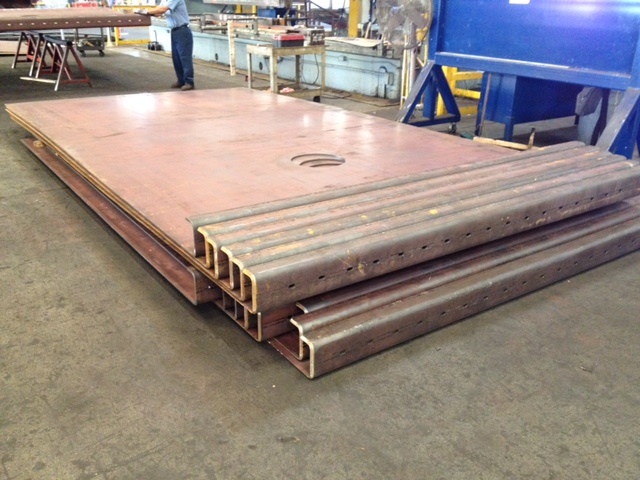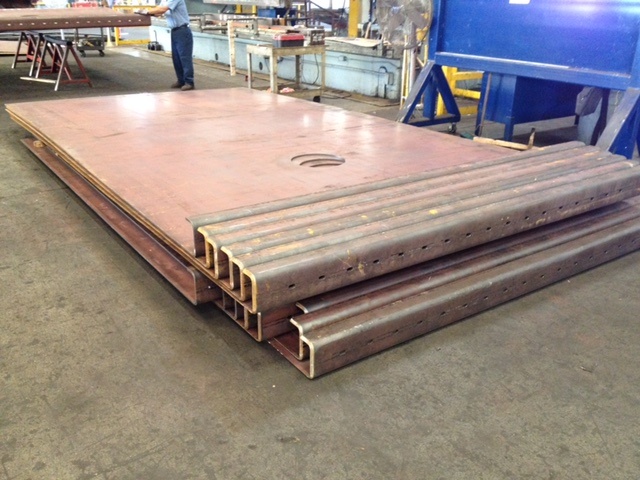

Short lead times are an integral part of the metals industry. Customers want the time between placing an order and receiving it to be as short as possible. The ability to keep lead times both short and consistent, therefore, is a crucial goal for a metal service center.
“In the past five to eight years, shorter lead times have become increasingly important,” says Scott Britt, operations manager at the Kloeckner Metals Santa Fe Springs Branch. “Customers don’t want to order things in advance because they don’t want to have material on their floor for an extended period of time. Everyone seems to want everything just-in-time.”
A multitude of factors goes into determining or establishing lead times, with the biggest contributing factor being the amount of work the shop has at any given time. While efficiencies or a lack thereof have a major impact on lead times, pricing can also play a role in ever-changing lead times.
“In today’s marketplace if you are selling our products at too high of a price, then the orders dry up and your lead time goes away,” Scott says. “However, if you are selling orders too cheap, that might be the reason why you are six weeks out while everyone else is only three days out. When it comes to pricing you have to find the sweet spot”
Kloeckner Metals Santa Fe Springs is part of the Heavy Carbon Group. Whereas the Flat-Rolled Group usually deals more with repeat contractual business, the Heavy Carbon Group tends to deal more with transactional business or one-off projects. Thus, lead times can change dramatically in one day, and the ability to manage lead times becomes that much more important. A normal lead time for something that requires simple burning may have a two-to-three-day lead time. Stock plate lead times are a whole different animal.
“Next day delivery for stock material is fairly commonplace these days,” Scott says. “However, we now have customers calling to come in the same day or in the next few hours to pick up material. It’s difficult and many times we’re able to get it done, but if we can’t get it done in time we know at the very least we have made every effort possible to accommodate our customer.”
More complex orders that require secondary processes such as beveling, rolling, forming or fabrication work, can take five to seven days longer. Older outdated machines which run slower require additional handling and mandate overtime, increasing costs and extending already lengthy lead times. For this reason, Santa Fe Springs is planning on expanding its capabilities with a new, fully-automated CNC press brake. This will reduce the amount of production time on press brake orders by an average of 60-70 percent. A job that used to take 10 hours will now only take 3 or 4. With the shop running two eight-hour shifts per day, this change should reduce current lead times by days.
“As a result, not only will we make more money on the jobs that used to take us say 40 hours in the press brake department , we will be able to fill the 25 hours we saved on that job with more work, and be more efficient on those jobs as well,” Scott says. “We’re going to see a huge reduction in our lead times while making more money on the jobs we are currently running, and getting more tonnage out the door, which makes us more profitable as a division.”
This is one area where a shop’s internal efficiency can have a big impact on lead time. Another area is cross training. Not only does cross training allow employees to fill in for each other when someone is out, it also allows employees to be pulled into areas where work is backing up. Employees are able to ramp up in an area that has been overwhelmed, and then pull back once work has been normalized.
“I think cross training is a critical component of being able to pull guys and put them where the work is, which in turn helps us keep our lead times in check. This is something we do quite a bit,” Scott says.
The timing of an order can also greatly impact lead time. A lot of customers tend to place orders near the end of the month, which can cause a backup. Intelligent forecasting can help with this, but an unexpected, large order can pose a problem that needs to be managed properly.
“Because customers don’t want to buy in advance, they’ll hold an order until the last minute, which puts an awful lot of strain on the operations side,” Scott says. “One of the challenges this creates is making sure things are communicated correctly in terms of what the customer’s needs are. Fortunately, we have a lot of good admin and sales people here in SFS that work very hard to ensure operations are well informed. This allows us to keep even the most demanding of customers happy.”
![]()

Steel base plates are fundamental elements employed in various manufacturing...
Metal fabrication is a critical process that transforms raw metal...
The solar industry has undergone a significant transformation by incorporating...

X
The Kloeckner Metals website uses modern technologies. Unfortunately, your browser doesn't support those technologies.
Download the latest version of one of these browsers to experience the site: